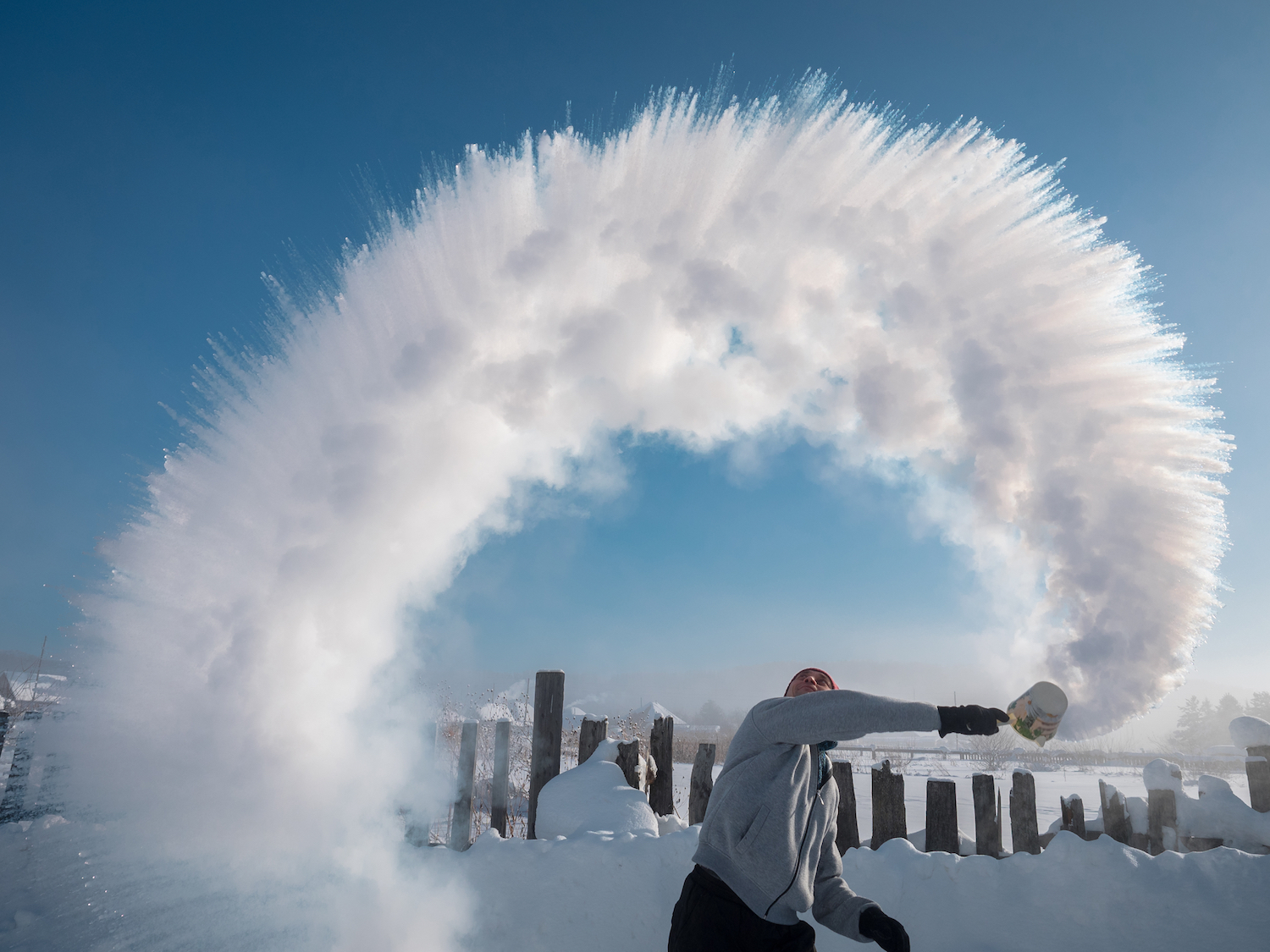
How Can Boiling Water Turn into Snow?

In a video posted on Weather.com, a woman tosses a cup of boiling water into the air on a minus 22 Fahrenheit day (minus 30 Celsius) in Canada's Northwest Territories. The water starting out at roughly 212 F (100 C) instantly turns to snow upon hitting the air and blows away.
The video has been all over blogs and Twitter in the past few days, with many folks wondering how the trick works. Mark Seeley, a climatologist at the University of Minnesota, explained it to Life's Little Mysteries.
"When it's cold outside, there's hardly any water vapor present in the air, whereas boiling water emits vapor very readily that's why it's steaming," Seeley says. "When you throw the water up in the air, it breaks into much smaller droplets, so there's even more surface for water vapor to come off of.
"Now, cold air is very dense, and this makes its capacity to hold water vapor molecules very low. There's just fundamentally less space for the vapor molecules," Seeley explains. "So when you throw the boiling water up, suddenly the minus 22 air has more water vapor than it has room for. So the vapor precipitates out by clinging to microscopic particles in the air, such as sodium or calcium, and forming crystals. This is just what goes into the formation of snowflakes.
"You have to have a huge temperature gradient to see this effect. I'm surprised it was cold enough at minus 22. Here in Minnesota, we don't try this experiment until it's minus 30, but I suppose if the air is dry enough if it's minus 22 with extremely low relative humidity you can get away with it."
Turns out there's an upside to sub-zero temperatures.
- Why does grilled food turn black?
- Why does ice cream cause brain freeze?
- A woman died from dry ice fumes. Here's how it can happen
Originally published on Live Science.
Sign up for the Live Science daily newsletter now
Get the world’s most fascinating discoveries delivered straight to your inbox.
Natalie Wolchover was a staff writer for Live Science from 2010 to 2012 and is currently a senior physics writer and editor for Quanta Magazine. She holds a bachelor's degree in physics from Tufts University and has studied physics at the University of California, Berkeley. Along with the staff of Quanta, Wolchover won the 2022 Pulitzer Prize for explanatory writing for her work on the building of the James Webb Space Telescope. Her work has also appeared in the The Best American Science and Nature Writing and The Best Writing on Mathematics, Nature, The New Yorker and Popular Science. She was the 2016 winner of the Evert Clark/Seth Payne Award, an annual prize for young science journalists, as well as the winner of the 2017 Science Communication Award for the American Institute of Physics.











